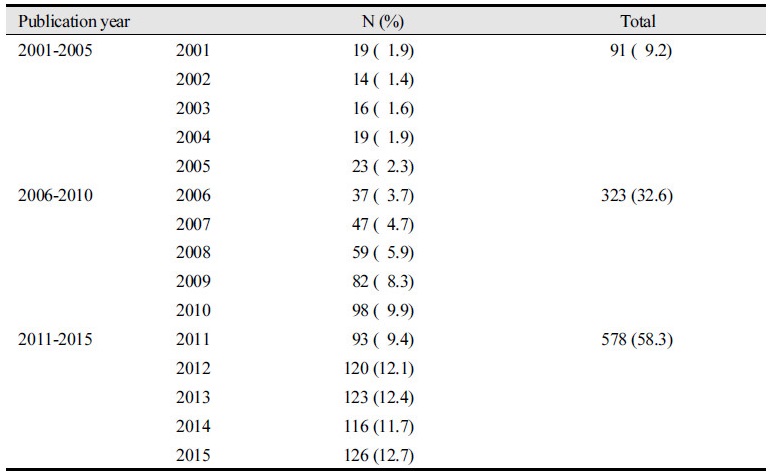Abstract
Objectives: The purpose of study is to investigate trends in dental hygiene research published in the Journal of Korean Society Dental Hygiene. Methods: Total of 992 researches were published between 2001 to 2015 were reviewed using analysis criteria. Results: 23.7% of the researches were supported financially. The most frequent research topics were oral health (40.9%). 3 to 5 researchers per research (38.5%) was most common and 84.1% of principal researchers were professors. 29 researchers were approved by IRB (2011 to 2015). As for the type of research, 87.1% of quantitative studies adapted survey and 9.5% adapted experiment. Convenient sampling was used in 85.6% of the researches. 32.7% of studies searched information in school. Interventions of dental material were the most in pre experimental design (19.2%) and Interventions of activation of oral health program were the most in quasi experimental design (37.5%). Conclusions: The findings of this study suggested the recent trends and the direction in dental hygiene research.
Acknowledgements
본 연구는 2016년도 한국치위생학회 정책연구과제 지원에 의하여 수행되었음.
Figures & Tables

Table 1. Current state by publication year in JKSDH Unit: N (%) (N=992)


